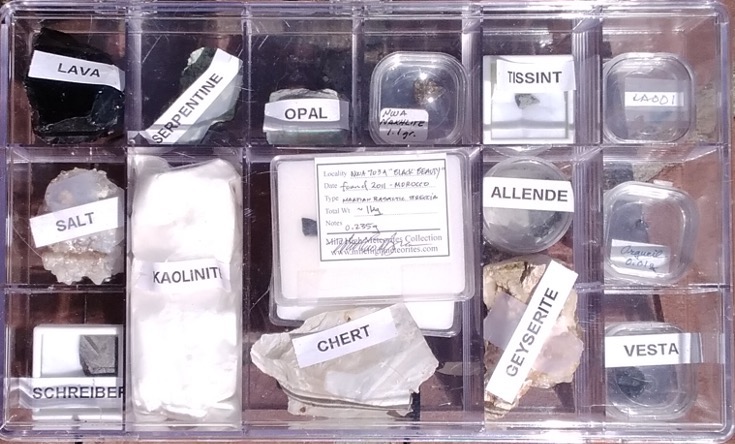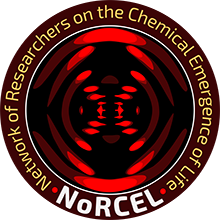
Bob Bruner's2023 Exhibit NoRCEL
It is commonly accepted that you need three conditions for life to start:
- A source of Organic Molecules
- A solvent (water )
- A source of energy to power the start of life
- Under water to protect from impacts on surface [1]
- On surface to get wet/dry cycles [2]
- Compartments on surface for organic molecules [3]
- Enough dry land to create boron to help RNA [4]
- Method to transfer Mars life to Earth [5]
- Method to transfer organic molecules to planet [6]
- Method to transfer water to planet [7]
- Method totransfer phosphorus to planet [8]
- Protection and wet/dry cycles [9]
- The piece of the Murchison meteorite contains organic molecules
- The crust of a rocky planet contains enough water to create an ocean
- The sources of energy and location for the start of life have changed over 50 years
In the 70's, it was thought to be clay (i.e., see montmorillonite phyllosilicate)
In the 80's, it was thought to be black smoker vents on the ocean floor (i.e., see pyrite mineral)
In the 2000's, it was thought to be white smoker vents on the ocean floor (i.e., serpentinization of the mineral Olivine forming serpentine, magnetite, brucite)
In 2013, it was thought to be Mars because it had enough dry land to create boron to stabilize ribose in RNA (A Martian meteorite like Tissint. Here we give you a photo of Black Beauty )
In 2015, it was thought to be surface hot springs (sinter)
In 2016, it was thought to be volcanic island splash pools (opaline silica)
In 2017, it was thought to be sediment at the bottom of the ocean in silica gel which precipitates into chert
In future years, we expect that there will be new sources of energy and additional locations for the start of life from new theories.
Denver Museum of Nature and Science volunteer
METEORITES and MINERALS
associated with the
Origin of Life


Pyrite FeS2
Wachtershauser el al

Geyserite
Campbell et al

Opaline silica SiO2 · nH2O
Deamer et al

Chert
Westall et al

Lava
Jerome et al, Astrobiology 2022

Clay
(Phyllosilicate minerals)
Caims-Smith et al
https://www.mindat.org/min-2821.html
Hashizume et al
https://www.mindat.org/min-2156.html

Salt NaCl
Carrier et al, Astrobiology 2020

Olivine
(Fe, Mg)2SiO4
Russell et al

Zircon
Zr(SiO4)
Valley et al.

Serpentine
(Mg,Fe,Ni,Mn,Al,Zn)3[Si2O5](OH)4
Russellet al

Magnetite
Fe2+Fe3+2O4
Russell et al

Wulfenite
Pb(MoO4)
Benner et al

Tourmaline
(NaFe2+3Al6(Si6O18)(BO3)3(OH)3(OH))
Benner et al

Colemanite
(Ca[B3O4(OH)3] · H2O)
Benner et al

Aguas Zarcas
(CM2 meteorite)
This is a Carbonaceous chondrite meteorite which provides good evidence of the first organic molecule synthesis in the Early Solar System
Pizzarello et al., Metoritics and Planetary Science 2020.
Read a story of how it has been found here.

Enstatite
Mg2Si2O6
(Pyroxene mineral)

Murchison
meteorite

Tambo Quemado
(Fe-Ni meteorite)
This meteorite contains the mineral Schreibersite

Black Beauty
(Martian meteorite)
Agee et al


